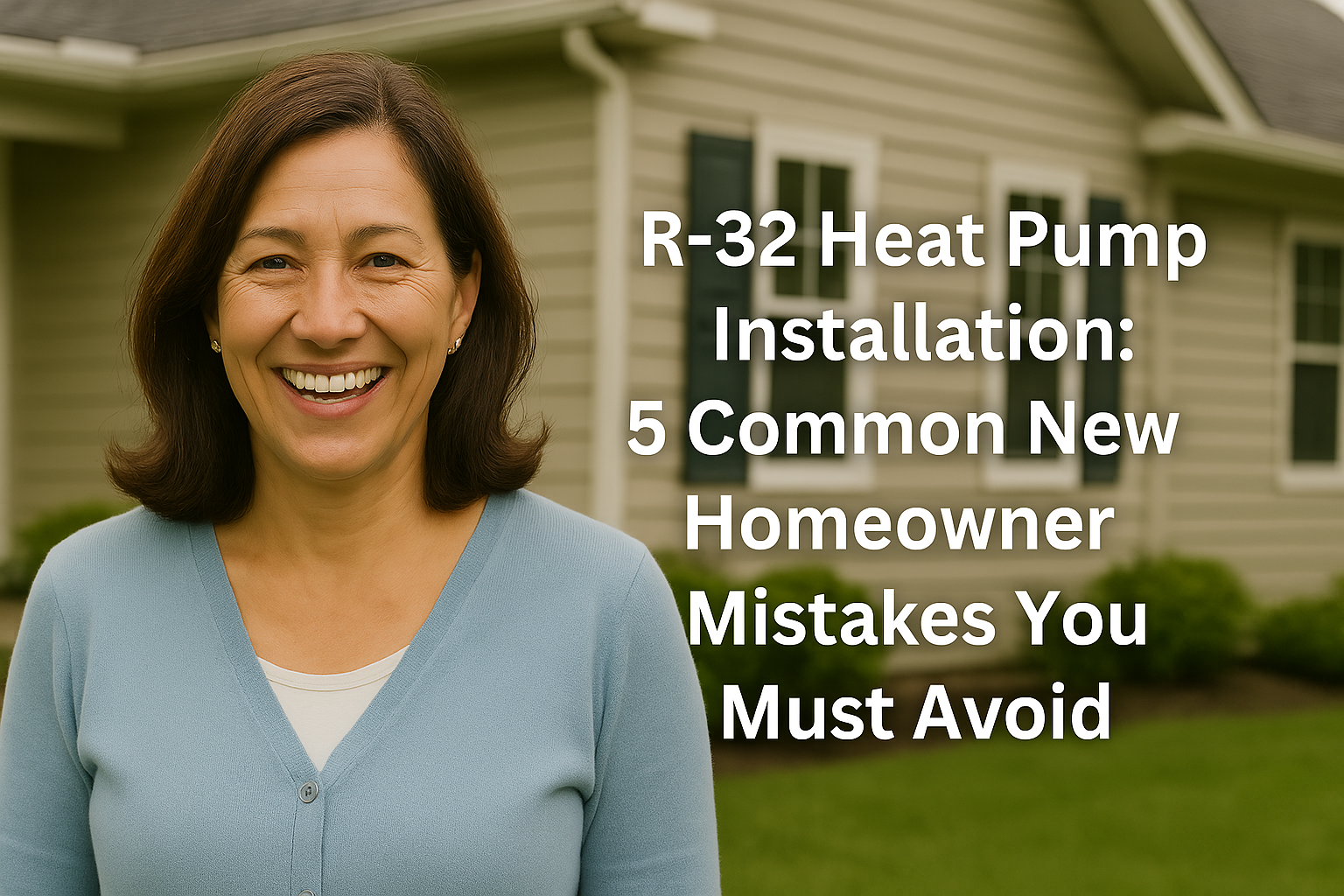👋 Introduction from Samantha the Smart Shopper
Hey friends! 👋 Samantha here, your trusty Smart Shopper, back to help you make the best choices when it comes to heating and cooling your home. Today, I want to walk you through one of the biggest stumbling blocks for new homeowners: installing an R‑32 heat pump.
I remember when we bought our first home — I was over the moon about making it cozy and energy‑efficient. But, like many new homeowners, I overlooked a few crucial details when choosing and setting up our heating and cooling system. Those missteps cost us both time and money until we learned better.
So in this guide, I’ll share the top five mistakes new homeowners make when installing an R‑32 heat pump and give you actionable tips to get it right the first time. Let’s save ourselves some headaches (and some dollars!) together. 🌱❄️ Let’s dive in!
⚡️ What Is an R-32 Heat Pump, and Why Choose It?
If you’re new to heating and cooling, you might be wondering why an R‑32 heat pump is worth all the buzz. Put simply, R‑32 is an eco‑friendly refrigerant that’s reshaping the HVAC industry. According to the EPA, R‑32 has roughly one‑third the global warming potential (GWP) of older refrigerants like R‑410A — making it a smart choice for those looking to save money and reduce their carbon footprint.
Better efficiency, lower environmental impact, and compatibility with future regulations? That’s why an R‑32 heat pump is the way to go.
❌ The 5 Biggest Mistakes New Homeowners Make When Installing an R-32 Heat Pump
🛑 Mistake #1: Choosing the Wrong Unit for Your Home’s Size
It’s tempting to assume that bigger is better when it comes to heating and cooling. But an oversized or undersized unit can lead to:
-
Higher energy costs 💰
-
Uneven heating or cooling 🥵❄️
-
Reduced equipment lifespan ⚙️
✅ What to Do Instead:
Perform a load calculation based on your home’s square footage, layout, and climate zone. According to Energy Star, a properly sized unit improves efficiency and comfort while extending equipment life.
🛑 Mistake #2: Improper Placement of the Unit
Location matters! New homeowners often pick spots based on aesthetics rather than performance. Placing the condenser too close to walls, plants, or fences can impede airflow, making the unit work harder and increasing wear and tear.
✅ What to Do Instead:
Give your unit room to breathe — ideally 24–30 inches of clearance on all sides. The AHRI (Air-Conditioning, Heating, and Refrigeration Institute) suggests choosing a spot with adequate clearance and protection from direct sun, ice, or falling debris.
🛑 Mistake #3: Skipping the Manual and Installation Guide
I get it — after a long move, the last thing you want to do is read a lengthy manual. But skipping this vital step can cost you dearly. New homeowners often miss crucial manufacturer recommendations for installation and maintenance.
✅ What to Do Instead:
Review your R‑32 heat pump installation guide thoroughly. These documents are tailored for your specific model and often contain warranty‑protecting information. According to Energy.gov, following installation instructions is vital for long‑term efficiency and safety.
🛑 Mistake #4: Neglecting to Use a Certified Technician
DIY projects can be rewarding — but R‑32 heat pumps aren’t the place for guesswork. New homeowners sometimes skip hiring a certified HVAC technician, hoping to save a buck. But an improperly installed unit can lead to refrigerant leaks, compressor failures, and higher long‑term costs.
✅ What to Do Instead:
Work with a technician trained in R‑32 installations. The EPA Section 608 program ensures that professionals have the right certifications to handle R‑32 refrigerant safely and properly.
🛑 Mistake #5: Failing to Establish a Maintenance Routine
Even the best R‑32 heat pump can lose efficiency if it’s neglected. New homeowners often forget to schedule routine maintenance, leading to clogged filters, dirty coils, and reduced performance.
✅ What to Do Instead:
Make maintenance a priority from day one. According to the Department of Energy, regular upkeep can reduce energy costs by 10–25% and extend the life of your equipment.
⚡️ Additional Tips for New Homeowners Considering an R-32 Heat Pump
👉 Invest in a Smart Thermostat:
Modern thermostats can save up to 10–15% on heating and cooling costs. According to Energy Star, programmable thermostats also reduce wear and tear.
👉 Check Insulation and Seals:
Even a state‑of‑the‑art R‑32 heat pump can’t compensate for a poorly insulated home. New homeowners should inspect windows, doors, and ductwork for air leaks and fix them promptly.
👉 Consider a Service Agreement:
Some HVAC companies offer annual service packages that cover routine maintenance and inspection. This can save money and help spot issues before they become costly repairs.
⚡️ Final Thoughts from Samantha the Smart Shopper
Thank you for joining me on this deep dive into the top five mistakes new homeowners make when installing an R‑32 heat pump — and how to steer clear of them. 🌱❄️ Getting it right from the start doesn’t just save money — it ensures a comfortable, energy‑efficient home for years to come.
If you’re ready to make the switch, I highly recommend checking out the R‑32 Heat Pump Systems Ton page at The Furnace Outlet. You’ll find a great range of units to suit every space and budget, along with expert resources to help you make the best choice for your new home.
Want to know more about maintaining your heat pump system? Visit: Samantha’s Smart Guide: The Must‑Have DIY Maintenance Checklist for Your R‑32 Heat Pump.
With the right equipment, a trustworthy technician, and a solid maintenance routine, you can enjoy the comfort and reliability you deserve. Stay cozy, stay confident, and never be afraid to ask questions. We’re all in this together — making smart, sustainable choices one step at a time! ❤️
🌱❄️ Stay warm and save big, friends!
~ Samantha the Smart Shopper







